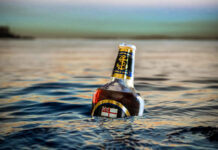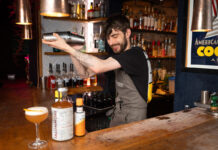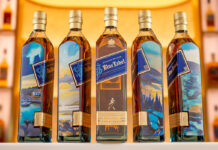Brewers say recent focus on provenance and quality is a good fit for category

THE spectrum of flavours available to Scottish beer drinkers is vast at the moment, with craft beer seemingly going from strength to strength.
But craft brewers aren’t the only ones benefitting from a renewed focus on provenance and quality, say drinks firms.
Craft may be rising but its growth has only been a good thing for world beer brands, according to Hugo Mills, director of sales and operations for Scotland at Molson Coors.
Mills said the rise in craft beer’s popularity “has led to a renaissance within the beer sector as a whole”.
David O’Neill of Shepherd Neame, the firm behind brands such as Asahi and Samuel Adams Boston Lager, agreed that world beer has benefitted “as more consumers are open to tasting new and innovative beers”.
“Craft and world beer touches every demographic and none more so than the future generation of beer drinkers,” said O’Neill.
The rise in popularity of craft beer has led to a ‘renaissance’ for the beer sector as a whole.
Andrew Turner, on-trade category and trade marketing director at Heineken, the firm behind world beer brands Kronenbourg, Birra Moretti and Amstel, agreed, claiming consumers across the UK now have “more choice than ever before”.
“Therefore it’s important that licensees read the marketplace and take into account their location and customer footprint,” said Turner.
One demographic that publicans can tailor their world beer offer towards is the student and young adult market.
And James Wright of Halewood International, the firm behind Chinese beer brand Tsingtao in the UK, believes world beer may have a pricing advantage over smaller brewers in this demographic.
“Students place high importance on price, but whilst craft microbrews may well be above budget for the average student, world beers can provide a cost-effective alternative to a young audience eager to try new things,” said Wright.
Outside of academia, with the festive season fast-approaching, Wright said there is a significant opportunity to match world beer with food during festive functions.
“[It’s] a sophisticated and different choice for Christmas parties,” said Wright.
“A crisp, refreshing world beer can strike an interesting note, whilst still being enjoyable alongside all the canapés and cold meats on offer.
“Operators should be aware of cultural events occurring in world beers’ home cultures as well – towards the end of the Christmas season.
“It’s advisable to have Tsingtao in stock, in preparation for the Chinese New Year in February, as the brand is a perfect match with many Chinese dishes.”
Beer and food matching presents a fantastic opportunity for pubs.
Echoing Wright’s sentiments, Graham Archibald of Morgenrot, the firm behind brands such as Argentinian beer Quilmes and German pilsner Krombacher, said he has “believed for a long time” that food and drink pairings are “not only good for sales but are good for the customer too”.
“Beer and food matching presents a fantastic opportunity for operators to cross – and up-sell, improve customer service and give their venue a point of difference,” said Archibald.
“It has definitely been growing over the past few years and we are seeing more and more venues beginning to utilise beer and food menus.
“Our team loves nothing more than producing creative beer and food lists for our customers.”
For operators looking to cash in on a food matching offer, Archibald said improving staff knowledge must be a focus.
“Staff play the biggest role in driving food and drink matching and training is essential,” he said.
“It’s not necessarily about being an expert but staff should have the knowledge of two or three food and drink matches from the menu that they can push and promote.”
In addition to staff recommendations, Sam Rhodes, director of customer marketing at Miller Brands, the firm behind Peroni Nastro Azzurro and Pilsner Urquell, suggested publicans consider the visibility of their world beer range.
“With consumer demand for quality lagers set to continue, world beer needs to be at the forefront of any outlet’s thinking, to maximise profit opportunities,” said Rhodes.
“Licensees should range packaged and draught beer independently – dual stock if relevant on high rate of sale brands.
“Miller Brands advises to put the highest margin brands on stand-alone fonts and in ‘hotspots’ (the highest consideration areas) as they offer perceptions of good quality as well as good standout.”
Packaging also plays a part in attracting new drinkers to world beer, according to Adam Broz, brew master at Czech brewer Budvar, who highlighted the advantages of canned beers.
“New filling technology developed by Budvar has once and for all removed the prejudice which has always condemned beer in a can as somehow being inferior to that in a bottle or a keg,” he said.
Staff play the biggest role in driving food and drink matching and training is essential.
Broz suggested that canned world beers have an edge over bottles in terms of taste as there is no light degradation of the beer.
This is because no light degradation can occur once the package is filled and sealed, he said.
And Budvar’s Scottish sales boss, Jonathan Barnes, suggested the canned format is worth considering when it comes to boosting world beer sales.
“This development has its social side as well and the number of UK pubs where drinking your beer from a can signals the coolness of the drinker is fast growing,” he said.
A spokeswoman for supplier Matthew Clark said world beer is important all year round.
“It is a good idea to review ranges on a regular basis to keep it fresh and change ranges to suit the different seasons or key dates/events in the year,” she said.



















